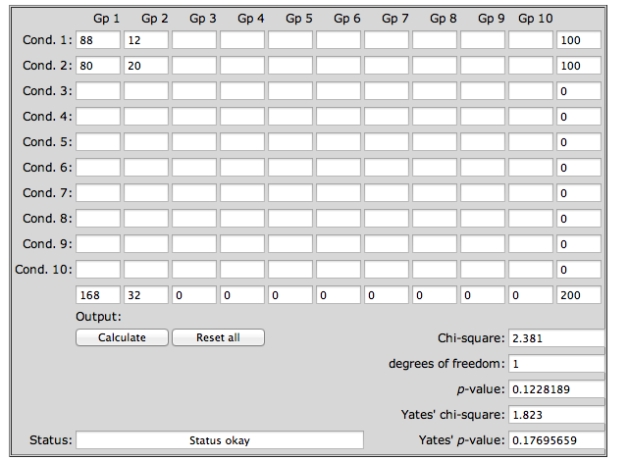Multiple Choice
A clinical psychologist has conducted a test of a new therapeutic treatment for anxiety disorders in which the new therapy is compared against a no-treament control condition.Colleagues point out that more of the participants are dropping out of the control condition to seek treatment elsewhere.To see whether this is the case, the researcher collects a new sample of 200 people experiencing anxiety disorders.She then randomly assigns them to either a no-treatment control (Cond.1) or a treatment (Cond.2) condition and records whether participants stayed with the program (Gp 1) or left early (Gp 2) .The results of a chi-square test are shown below (with output taken from Preacher's, 2001, on-line tool) .  Which of the following statements is true?
Which of the following statements is true?
A) The program has not worked as p = .122.
B) The program has not worked because p > .15
C) The result does not tell us whether the program worked.
D) The program has worked because chi-square > 2.
E) None of the above.
Correct Answer:

Verified
Correct Answer:
Verified
Q46: After careful ethical review of planned procedures,
Q47: "An assessment of the correspondence between an
Q48: A psychology professor has set a test
Q49: Which of the following statements is true?<br>A)Psychologists
Q50: "Involving the relationship between two variables".What is
Q52: "The largest probability that the researcher is
Q53: When researchers display reflexivity what does this
Q54: "The hypothetical distribution of the expected ratio
Q55: Which of the following does not compromise
Q56: A psychology professor has set a test